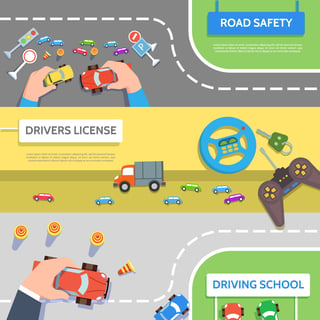Driver Training: Avoiding Driver Behavior That Causes Accidents
published on October 03, 2017 by Sonia Mastros
 Nothing is more important for school bus driver training than encouraging them to drive safely. With dozens of young lives at stake on every drive, this is inarguably the #1 priority for any school district. Unfortunately, not every driver training program emphasizes safety. Instead, the focus is on the basics of bus operation.
Nothing is more important for school bus driver training than encouraging them to drive safely. With dozens of young lives at stake on every drive, this is inarguably the #1 priority for any school district. Unfortunately, not every driver training program emphasizes safety. Instead, the focus is on the basics of bus operation.
That's necessary, sure, but districts need to go a step beyond to help protect their students while on the road. If you're looking for ideas on where to focus school bus driver training, we have some suggestions.
Ideas For Training Your Drivers To Encourage Better On-Road Behavior
1. Defensive Driving
Defensive driving training is an absolute must, arguably even more necessary for bus drivers than for everyday commuting. A school bus driver who is consistently watching out for dangers and "reading" the cars around them for signs of potential danger is a driver who will be much better equipped for avoiding trouble. Whether you host the training yourself or send them to one of the many defensive driving courses which are out there, make it part of your program.
2. Anger Management
Road rage doesn't necessarily mean outright raging. Without realizing it, small amounts of extra stress on a driver can translate into driving more aggressively and more dangerously. While not directly related to driving skills, an anger management course can be invaluable for helping your drivers keep their cool on the road, even in aggravating circumstances.
3. Emergency Evacuation Drills
A driver may go their entire career without having to conduct an emergency evacuation. If they are ever in an emergency, it's most likely going to be a life-or-death situation. Make sure they periodically have a chance to conduct an evacuation drill to ensure they remember proper procedures when the time comes.
Also, do you have an older bus you're going to decommission? Look into tipping it onto its side or even upside-down. You could give your drivers - and students - a one-of-a-kind opportunity to practice for a worst-case-scenario evacuation situation.
4. Winter Driving
In many northern districts, training for driving situations in ice and snow is standard. Those school districts located further south need the training too! If your drivers have not yet had this training, consider providing them with the skills to handle a school bus in all weather conditions.
5. Don't Forget Incentives!
Finally, look into installing systems such as video cameras or GPS trackers so you can directly observe safety procedures on each bus. It's a great opportunity to reward drivers who show exceptional safety skills.
What does your district do to improve its own school bus driver training? Tell us!



